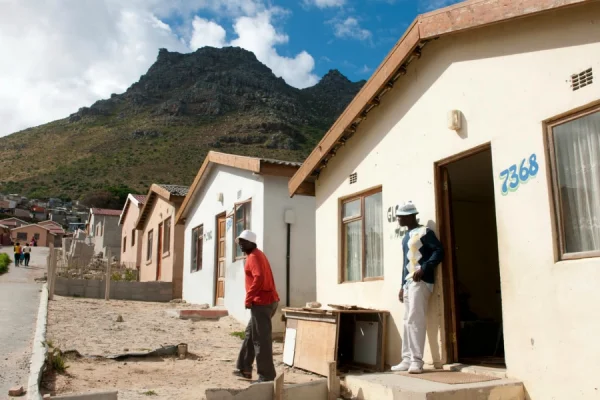Africa’s enormous housing shortage has few easy answers. Can innovative construction methods help, or does everything come back to finance?
Every day, more than 1,000 people are added to Kinshasa’s population. The Congolese capital has been the fastest-growing major city in Africa this century. It swelled from just over 6m inhabitants in 2000 to more than 14m in 2020 – an average increase of 410,000 every year, according to the African Cities Research Consortium.
This level of rapid – and often unplanned – growth is placing a huge strain on Africa’s cities. Decent and affordable housing is in desperately short supply. The UN estimates that 230m people in sub-Saharan Africa are living in what it defines as “slum households” – roughly half the continent’s urban population.
For a problem so large, Africa’s housing crisis receives remarkably little attention. “Everyone talks about infrastructure, and we feel like no-one talks about housing,” laments Kecia Rust, executive director of the Centre for Affordable Housing Finance in Africa (CAHF), a Johannesburg-based think tank.
Thithi Kuhlase-Maseko, who leads the Johannesburg office of British International Investment (BII), the UK’s development finance institution, says that housing “has been a challenging area for private sector players,” partly because of their difficulties in accessing finance. However, she notes that the crisis also represents an opportunity for developers and their investors to benefit from the continent’s urbanisation.
“Population growth will drive the development of more big cities within Africa and thus the demand for more affordable, sustainable and safe housing,” she says.

A rooftop view of Kibera, Nairobi, one of Africa’s largest slums. (Photo: Wollwerth Imagery / Adobe Stock)
Home run
One of the UN’s Sustainable Development Goals is to achieve universal access to adequate housing and the upgrading of slums by 2030. But the idea that hundreds of millions of decent homes can be built in Africa in the seven years left to hit the target appears wildly optimistic.
“Challenges come from both the supply and the demand side,” says Abhinav Sinha, head of technology and telecoms at BII. “The demand side is not an easy one to fix because it really boils down to just improving the income levels as well as improving availability of mortgage products.” BII has invested $36m in a South Africa-based affordable housing platform called Divercity, which is developing a number of projects that cater to low and middle-income households in the country.
There is no doubt that increasing the availability of loans for homeowners and housebuilders is a key priority. “Our business could be 10 times bigger, very, very quickly,” if customers were able to get access to financing at reasonable interest rates, says Jason Horsey, executive director of Kenya-based real estate developer Unity Homes. But he concedes that the financing problem reflects the overall lack of savings in a country like Kenya. “We don’t have enough capital in the country to justify a cheap cost of capital.”
Related articles
- Is it time for Africa to consider charter cities?
- Housing as the engine of revival in post-Covid-19 Africa
- How will Africans travel in the megacities of the future?
Finance is a huge challenge
Rust reminds us that the financing challenge is “huge”. For a start, Africa’s mortgage markets are severely under-developed. The value of mortgages is less than 3% of GDP in the vast majority of African countries, according to CAHF data (compared to well over 50% of GDP in almost all developed markets).
Moreover, financing for homeowners is only one part of the puzzle. “You need construction finance, you need end-user finance, and you probably need infrastructure finance to wrap around it. And the availability of each one depends on the other,” Rust explains.
It is not easy to get all of these pieces to fall into place. “Our industry has got a really bad reputation,” says Horsey. Real estate developers often have trouble repaying loans. An alarming 24% of loan values in the Kenyan building and construction sectors were classed as non-performing in March 2023, according to Central Bank of Kenya data. The non-performing loan ratio in the real estate sector stood at 18%.
Time for innovative housebuilding
Given enduring financing difficulties, can innovative building methods help with the housing challenge – or even with the housing challenge?
A growing number of companies are experimenting with alternative building methods and unconventional construction materials; others are working on tech solutions designed to improve transparency and increase the availability of home loans. The challenge will be scaling new approaches quickly enough that they can keep pace with the continent’s rapid urban population growth.
Homes that help with climate change
Globally, the manufacturing of building materials is responsible for 11% of carbon dioxide (CO2) emissions, according to the International Energy Agency – largely due to the carbon footprint of materials such as cement, concrete and steel.
A wooden building, by contrast, acts as a carbon store. “The carbon dioxide that was removed from the atmosphere and stored in the timber by the tree when it was growing is basically stored for the long term in the homes,” says Dutch engineer Wolf Bierens.






